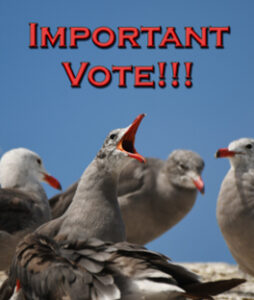 Last month I wrote about the environmental impact of pet waste (or, what goes out one end …); now I’ll try to convince you to reconsider what you are putting in your furry companion’s other end— your pet’s food. The way many people feed their cats and dogs magnifies, rather than minimizes, their contribution to climate change.
Last month I wrote about the environmental impact of pet waste (or, what goes out one end …); now I’ll try to convince you to reconsider what you are putting in your furry companion’s other end— your pet’s food. The way many people feed their cats and dogs magnifies, rather than minimizes, their contribution to climate change.
And pets do contribute to global warming. Americans collectively own about 96 million cats and 90 million dogs. (More people own dogs than own cats, but cat owners are more likely to have several cats.) These numbers have been steadily increasing, and so has their environmental impact. All these animals need to eat, and according to a widely cited study by Greg Okin, pets eat a quarter of all the meat consumed in this country. If American dogs and cats formed their own nation they would rank fifth in global meat consumption.
Most of us are aware that meat consumption contributes to climate change because livestock-rearing is a significant cause of greenhouse gases: the microbes that break down cellulose in ungulates’ digestive systems produce methane as a byproduct, which cows, sheep, et al. release when they burp, fart or poop. Methane is much more powerful than CO2 in trapping heat: a given volume of methane traps 100 times more heat than the same volume of carbon dioxide. Although most people assume that vehicles—cars, planes, trains, ships—are a larger problem than livestock, this isn’t true; although less methane is produced by the animals than CO2 is produced by the vehicles, the difference in the two gases’ heat-retaining properties means that the world’s 1.5 billion cattle have a larger overall impact on atmospheric heat retention than all forms of transportation combined.
Meat production also contributes to climate change by encouraging deforestation for land to grow grass and grains. Furthermore, it would be less wasteful to feed humans the grains that go to feed the livestock. These animals also consume huge quantities of water.
I’m certainly not suggesting we give up our pets, but sensible changes in the way we feed them could reduce their carbon footprint. For many years, pet owners fed their dogs and cats pet food made from scraps culled after the cuts eaten by humans were removed. The pets were perfectly happy with this arrangement; in fact, wild felines and wolves prefer organs such as lungs and liver over muscle. If our pets eat mostly scraps, we don’t need as many cattle to feed them and us as we do if they compete with people and eat choice cuts, such as steak. And there is no evidence that human-grade food keeps pets healthier. Unfortunately, advertisers have convinced many pet owners that Fluffy or Fido deserves and benefits from sirloin, and an ever-greater percentage of pet food is made of meat that humans could have consumed. Again, this increases the need for larger cattle herds.
You can also reduce pet-food waste by feeding your four-legged friend the right amount of food. More than half of American dogs and cats are overweight or obese, making them more vulnerable to kidney disease, cancer, diabetes, and respiratory disorders, and decreasing their lifespan. And obviously feeding more than they will eat, even if they stay svelte and leave the food in the bowl, just means more organic matter gets tossed in the trash.
Yet another way to reduce your pet’s environmental impact is to feed them lower down on the food chain. Chicken and fish consumption entails less environmental impact than beef production. (And even my very finicky cat doesn’t prefer beef overall to either chicken or fish; I bet yours won’t, either.) Also, while cats are more truly carnivorous than dogs, and must be fed a meatier diet, both species do fine with some vegetable matter in their food. Again, it is advertising, not science, that drives the trend of having your pet be “grain free” or eat “100% meat.”
Pets can even help you reduce some of your own food waste. Have you considered feeding them leftovers from your own meat-based meals, rather than throwing these leavings away? Most of us eat our own leftovers, but sometimes there isn’t quite enough to save, and you can chop up these bits and mix them into your pet’s food.
These suggestions will save you money and help reduce your family’s carbon footprint. They won’t hurt your pet. And these are the kinds of small changes that can add up to make a difference. (by Kim Adelson, Photo: Wikimedia Commons)







